Why Cover Letters Matter (Even Without Experience)
In the competitive landscape of job applications, a cover letter serves as your initial introduction, providing an opportunity to go beyond the confines of your resume. While experience may be limited, a well-crafted cover letter allows you to showcase your personality, enthusiasm, and potential, demonstrating your suitability for the role and the company. Even when you lack direct experience, a compelling cover letter can be the key to unlocking opportunities, offering insights into your skills, motivations, and eagerness to learn. A cover letter is an invaluable tool and provides a chance to connect with the hiring manager on a personal level and present yourself in the best possible light. It’s your chance to make a memorable first impression and stand out from other applicants.
Showcasing Your Soft Skills
Soft skills, the interpersonal and transferable abilities essential for success in any job, are highly valued by employers. These skills, such as communication, teamwork, problem-solving, and adaptability, can be effectively highlighted in your cover letter. Provide specific examples of how you’ve demonstrated these skills in previous experiences, such as volunteer work, academic projects, or extracurricular activities. For instance, if you collaborated on a team project, discuss your role, contributions, and the successful outcome, showcasing your teamwork and communication skills. Highlight situations where you had to resolve conflicts, adapt to changing circumstances, or take initiative to solve problems. Use action verbs to illustrate your abilities and illustrate how you’ve developed these skills through diverse experiences. Soft skills often determine the success of a candidate, and showcasing them can significantly increase your chances.
Highlighting Transferable Skills
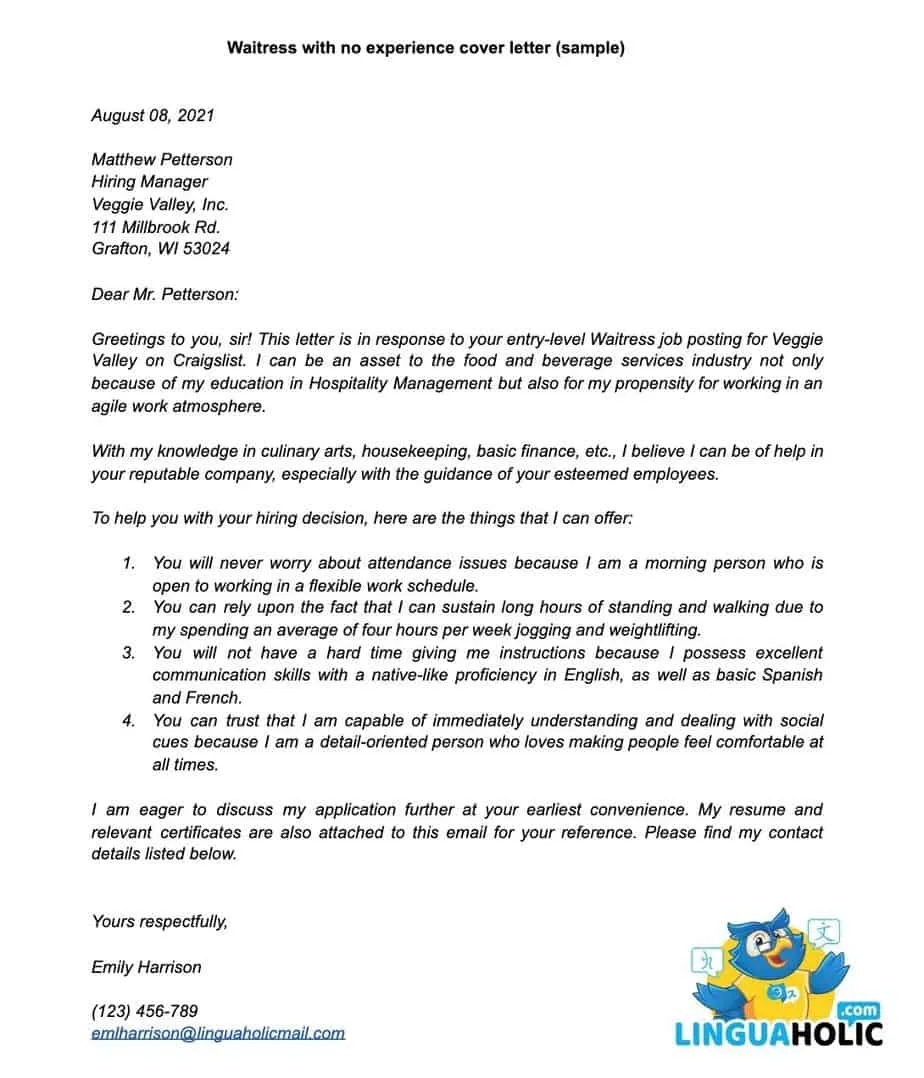
Transferable skills are abilities you’ve acquired in previous roles, education, or personal experiences that are applicable to the job you’re applying for. Identify these skills by carefully reviewing the job description and pinpointing the required qualifications. Then, reflect on your past experiences and identify instances where you utilized these skills. For example, if the job requires project management skills, and you organized a successful event for a club, highlight your planning, organizational, and leadership abilities. If the job involves customer service, and you volunteered at a community center, detail your interactions, problem-solving, and ability to provide assistance. By demonstrating your proficiency in transferable skills, you can effectively bridge the gap caused by a lack of direct experience and convince the employer of your potential.
Tailoring Your Cover Letter
A generic cover letter can easily be discarded, so it is crucial to tailor your cover letter to each job application. Begin by carefully reviewing the job description and identifying the key requirements and expectations. Research the company and its values to understand its culture and goals. Use this information to customize your cover letter, addressing how your skills, experiences, and enthusiasm align with the position and the company’s needs. Show that you understand the specific role and what the company is looking for. Avoid using a one-size-fits-all approach. Instead, focus on the relevant aspects of your background, highlighting specific experiences and skills. Show your genuine interest by referencing specific aspects of the company. Tailoring your cover letter demonstrates that you’ve put in the effort and are genuinely interested in the opportunity, significantly increasing your chances of success.
Researching the Company
Demonstrating your knowledge of the company is crucial in showing your interest and suitability for the role. Before writing your cover letter, take the time to research the company thoroughly. Visit their website, explore their products or services, and read about their mission, values, and culture. Investigate their recent news, achievements, and any relevant information that could help you understand their goals and current projects. If possible, review the LinkedIn profiles of employees, including the hiring manager. This research will give you valuable insights and enable you to customize your cover letter effectively. You can address the specific company’s challenges, goals, or values in your letter, showing that you’ve invested the time and effort to learn about the organization. Show that you are not just applying for a job but are genuinely interested in being a part of their team.
Understanding Job Requirements
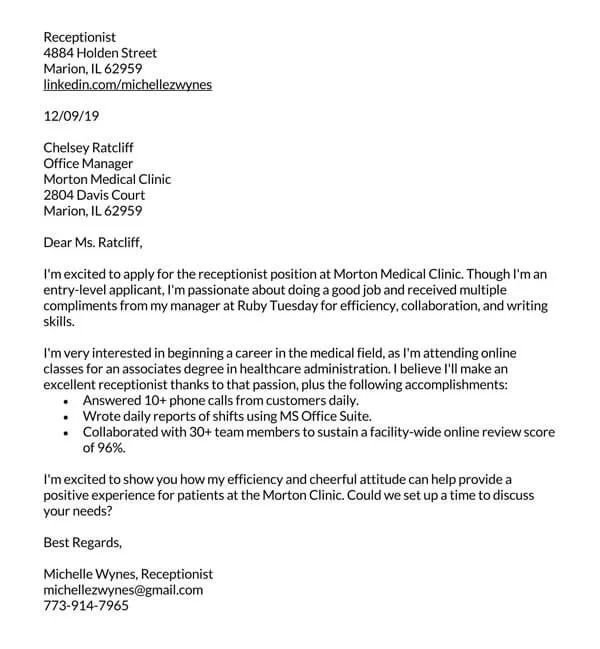
Carefully analyze the job description to fully understand the required qualifications, skills, and responsibilities. Identify the key requirements and prioritize those that align with your abilities and experiences. Pay attention to the language used in the job description and use similar keywords and phrases in your cover letter. Understand what the employer is looking for in a candidate and address these requirements directly. If you don’t have direct experience in every area, focus on how your transferable skills can contribute to success in the role. By demonstrating an understanding of the job requirements, you show the hiring manager that you’ve put in the effort and are a good fit for the position. Tailoring your cover letter to match the specific requirements is a crucial step in increasing your chances of getting an interview.
Formatting Your Cover Letter
A well-formatted cover letter is essential for making a professional first impression. Begin with a clean and easy-to-read font, such as Times New Roman or Arial, and use a standard font size (11 or 12 points). Maintain consistent formatting throughout the document, including spacing, margins, and alignment. Use clear headings and subheadings to divide the content and make it easy to scan. Break up long paragraphs into shorter, more readable sections. Proofread meticulously for grammatical errors, typos, and formatting inconsistencies. A well-formatted cover letter presents you as organized, detail-oriented, and professional. These simple formatting choices can significantly impact how the hiring manager views your application.
Header and Contact Information
Your cover letter should include a professional header with your name, address, phone number, and email address. Ensure the email address is professional. It is best to use a combination of your first and last name. Also, include the date, the hiring manager’s name (if known), and the company’s name and address. If you’re submitting your application electronically, you may not need to include your physical address. Be sure to format your header clearly and consistently. A professional header establishes your identity and allows the hiring manager to easily contact you. Double-check the accuracy of your contact information to ensure you don’t miss any opportunities.
Opening Paragraph that Grabs Attention
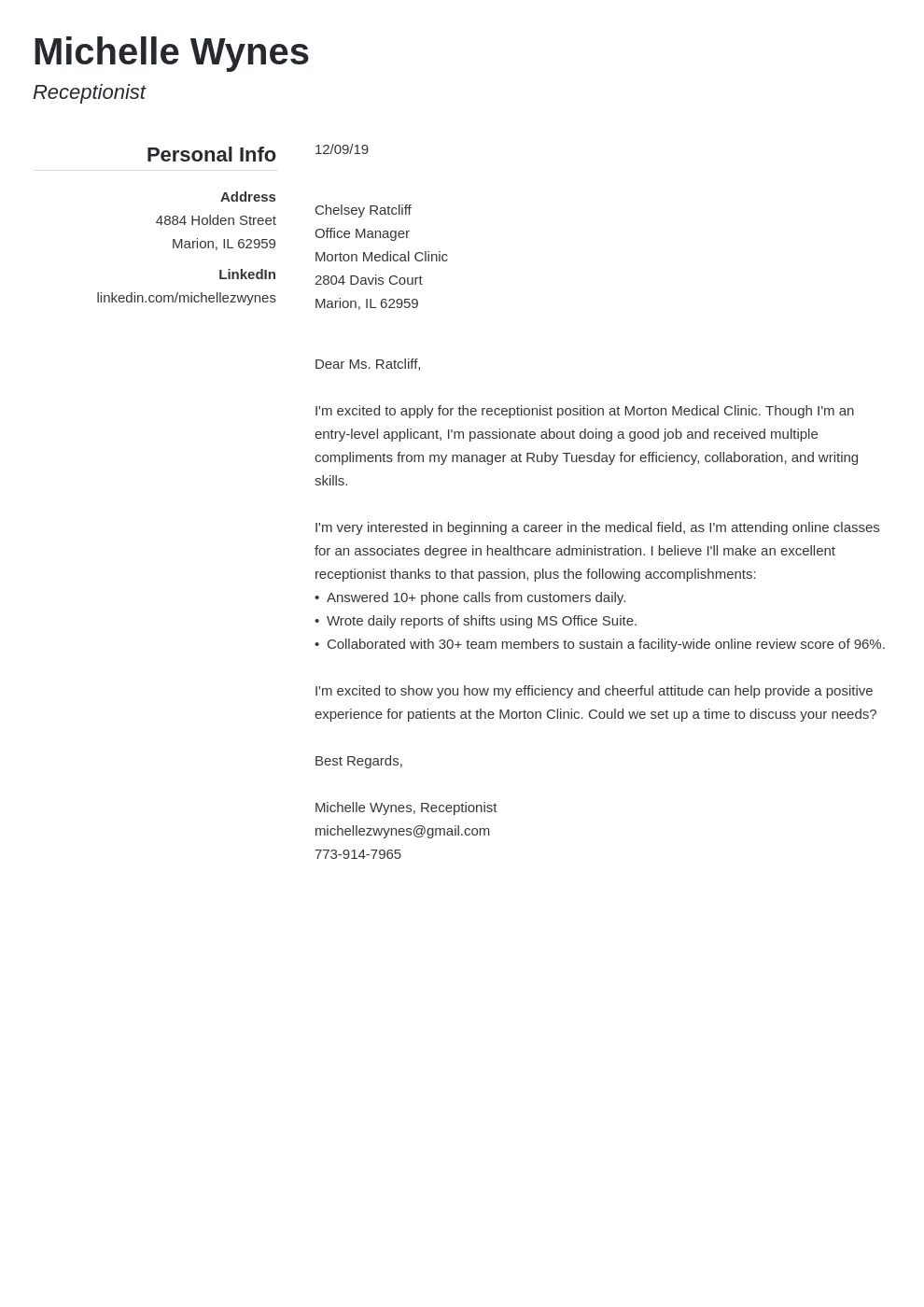
The opening paragraph of your cover letter sets the tone and grabs the hiring manager’s attention. Instead of a generic opening, start with a compelling hook that immediately shows your interest in the role and the company. You can mention where you saw the job posting, or what specifically about the position interests you. Consider expressing enthusiasm and highlighting your desire to contribute to the company’s success. Briefly mention your key skills or experiences that align with the job requirements. The goal is to capture the reader’s interest from the beginning and make them want to continue reading your letter. Ensure your opening is well-written, concise, and shows your enthusiasm, giving you a better chance of getting noticed.
Body Paragraphs Highlighting Skills
The body paragraphs are where you provide detailed information about your skills and experiences, even if you lack direct experience. Focus on transferable skills, soft skills, and any relevant experiences you have. Use the STAR method (Situation, Task, Action, Result) to provide examples of how you’ve demonstrated those skills. Clearly describe the situation, your task, the actions you took, and the positive results achieved. Quantify your accomplishments whenever possible, using numbers or data to demonstrate the impact of your work. Tailor each example to the specific job requirements and use keywords from the job description. Present your experiences and abilities in a clear, concise, and engaging manner to convince the hiring manager of your potential.
Quantifying Achievements (Even if Limited)
Even without extensive work experience, you can still quantify your achievements to make a strong impression. Quantifying means providing specific numbers, data, or metrics to demonstrate the impact of your actions. For instance, if you volunteered for an organization, mention the number of hours you contributed, the number of people you helped, or any positive outcomes you achieved. If you completed a project, include specific results. If you improved efficiency, reduced costs, or increased customer satisfaction, quantify your achievements to show your impact. Quantitative data demonstrates your skills, accomplishments, and potential. This makes it easier for the hiring manager to evaluate your contributions. It also makes your cover letter more compelling and shows your ability to deliver results.
Demonstrating Enthusiasm and Willingness to Learn
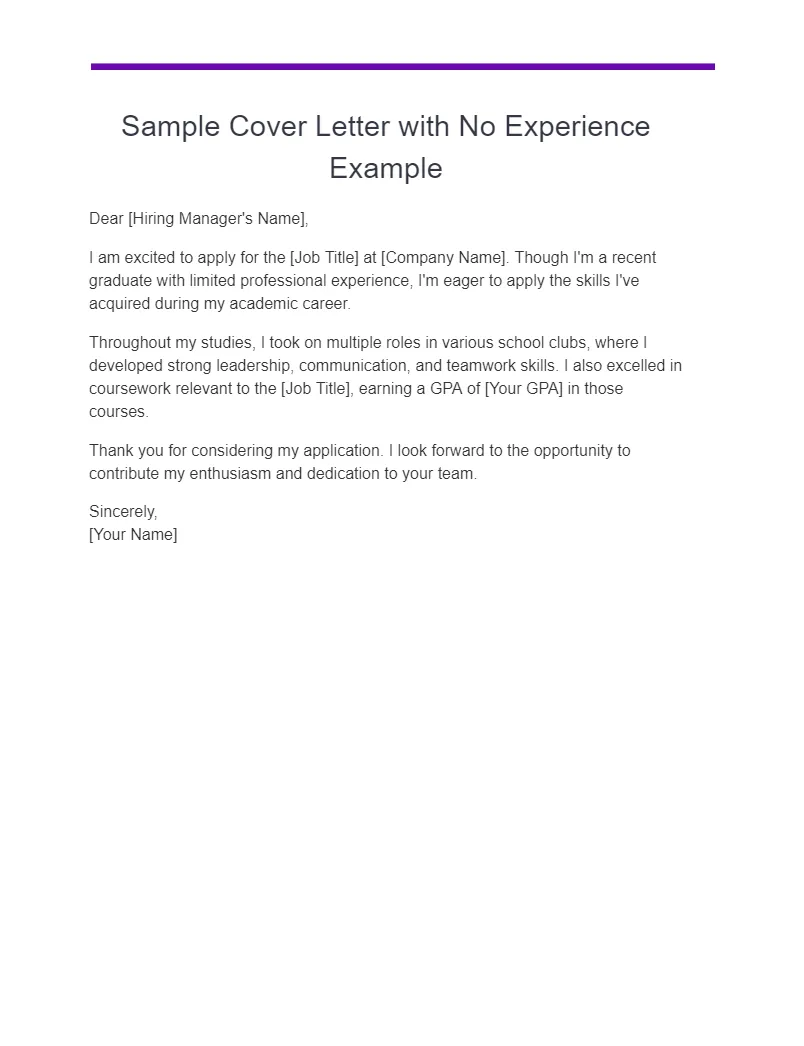
When you lack experience, showing enthusiasm and a willingness to learn is essential. Throughout your cover letter, express your genuine interest in the role and the company. Demonstrate your eagerness to contribute, grow, and develop new skills. Mention specific aspects of the job that excite you and express your desire to learn from experienced professionals. You can explain how you’re open to feedback and training. Highlight your proactive approach to learning and your ability to adapt to new challenges. By showing your enthusiasm, you demonstrate your potential, and convince the hiring manager that you are eager to grow, which will make you a more attractive candidate.
Closing Paragraph with a Strong Call to Action
The closing paragraph should summarize your key qualifications and reiterate your interest in the role. End with a strong call to action, such as requesting an interview or expressing your eagerness to discuss your application further. Thank the hiring manager for their time and consideration, and include your contact information again, just in case. Be polite and professional, and keep it concise. A strong call to action motivates the hiring manager to take the next step. It shows your confidence and initiative and gives you a better chance of getting an interview.
Proofreading and Editing
Proofreading and editing your cover letter is crucial to ensure it is free of errors. Spelling mistakes, grammatical errors, and typos can make your application appear unprofessional. Review your cover letter carefully, paying attention to sentence structure, word choice, and punctuation. Use grammar-checking tools. Ask a friend, family member, or career advisor to review your cover letter for feedback and errors. A polished, error-free cover letter demonstrates your attention to detail and commitment to excellence. The quality of your writing reflects how serious you are about the job and increases your chances of making a positive impression.
Tools for Cover Letter Writing
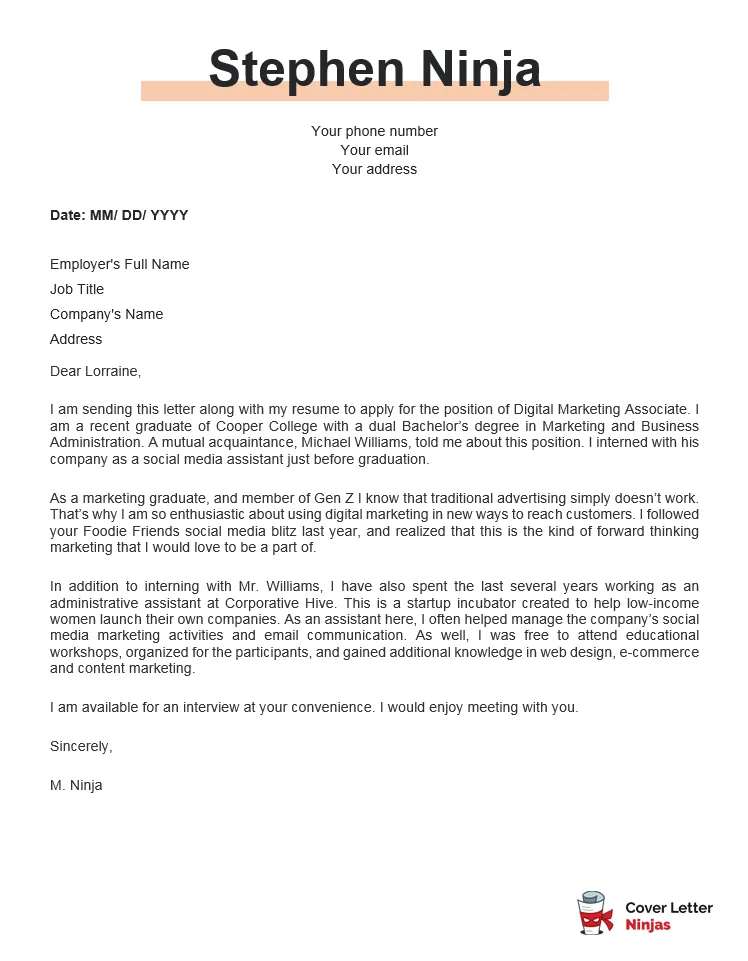
Several online tools can help you write and improve your cover letter. Grammar and spell-checking tools like Grammarly and ProWritingAid can identify and correct errors. Online resume builders can provide cover letter templates and guidance. Career websites offer cover letter examples and tips. Review templates and examples to get ideas for formatting, content, and phrasing. Seek help from career advisors and mentors who can offer personalized feedback. These tools can help you create a polished and professional cover letter. This provides you with a significant advantage and can help you stand out from other candidates.
